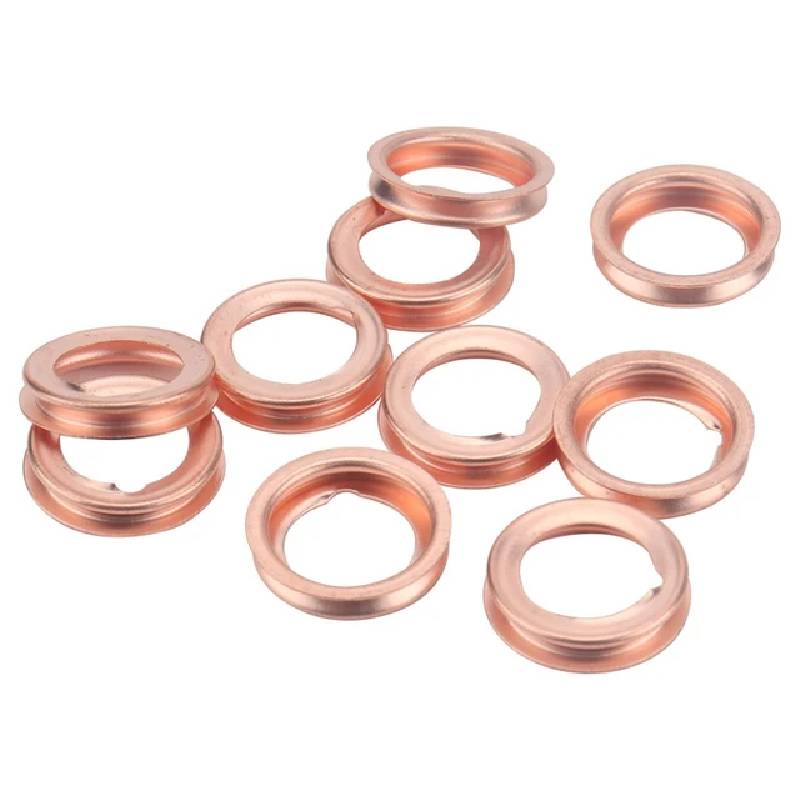Understanding the Importance of Upper and Lower Oil Pan Gaskets for Engine Performance and Maintenance
Understanding Upper and Lower Oil Pan Gasket
The oil pan gasket is a crucial component in an automobile's engine system, particularly in vehicles equipped with internal combustion engines. This gasket serves as a seal between the engine block and the oil pan, ensuring that engine oil remains contained within the pan while also preventing leaks. The oil pan itself is divided into two main sections the upper oil pan and the lower oil pan, each having specific functions and gasket requirements.
Function of the Oil Pan Gasket
The primary purpose of the upper and lower oil pan gasket is to prevent oil leaks, which can lead to a myriad of problems including engine overheating, loss of lubrication, and eventual engine failure. The gasket also helps maintain proper oil pressure within the engine, which is vital for the effective lubrication of engine parts. An effective seal ensures that the engine runs smoothly and efficiently, facilitating the overall performance of the vehicle.
Upper and Lower Oil Pans
In many modern engines, particularly those with advanced designs, the oil pan consists of both an upper and a lower section. The upper oil pan typically houses the oil pickup tube and may also contain various sensors and other components that are crucial for engine operation. The lower oil pan, on the other hand, serves as the main reservoir for engine oil, allowing it to be collected and reused for lubrication.
Both sections require specific gaskets crafted from materials that can withstand the high temperatures and pressures present in an operating engine. Common materials used for oil pan gaskets include rubber, silicone, and various composite materials designed to resist degradation over time.
Signs of a Failing Oil Pan Gasket
upper and lower oil pan gasket

Over time, the oil pan gasket may wear out due to continuous exposure to high temperatures and engine vibrations. Some signs of a failing oil pan gasket include
1. Oil Leaks Visible oil spots or stains under the vehicle can indicate that oil is leaking from the gasket. 2. Low Oil Levels Frequent oil changes may be necessary if there are leaks, leading to a gradual decrease in oil level. 3. Oil Pressure Warning Lights If the pressure drops due to insufficient oil in the system, warning lights may illuminate on the dashboard.
Maintenance and Replacement
Maintaining the oil pan gasket is essential to ensure the longevity and functionality of the engine. Regular oil changes can help minimize the buildup of sludge, which, if left untreated, can cause the gasket to degrade faster.
When replacing an oil pan gasket, it is crucial to ensure that the surface of the oil pan and engine block are clean and free of debris. Proper torque specifications must be followed during reinstallation to avoid leaks caused by insufficient sealing pressure.
Conclusion
In conclusion, the upper and lower oil pan gaskets play a vital role in the proper functioning of an engine. Regular maintenance and timely replacement when signs of wear appear can prevent expensive engine repairs and ensure that the vehicle operates efficiently. An understanding of these components helps car owners take better care of their vehicles, ultimately enhancing performance and longevity. Being attentive to the signs of a failing oil pan gasket can save time, money, and engine health in the long run.
-
The Ultimate Guide to Car Repair Kits: Tools and Essentials Every Driver Should Own
News Aug.01,2025
-
The Complete Guide to Oil Pan Gaskets: Sealing Engine Leaks the Right Way
News Aug.01,2025
-
Preventing Oil Leaks: A Complete Guide to Oil Pan Gaskets and Drain Seals
News Aug.01,2025
-
Everything You Need to Know About Oil Pan Gaskets and Drain Plug Seals
News Aug.01,2025
-
Essential for Car Owners: How to Use a Car Repair Kit to Deal with Minor Breakdown
News Aug.01,2025
-
Comprehensive Guide to Engine Oil Sump Gaskets and Related Seals
News Aug.01,2025
-
The Ultimate Guide to Boat Propeller Bearings and Trailer Wheel Bearings
News Jul.31,2025
Products categories















